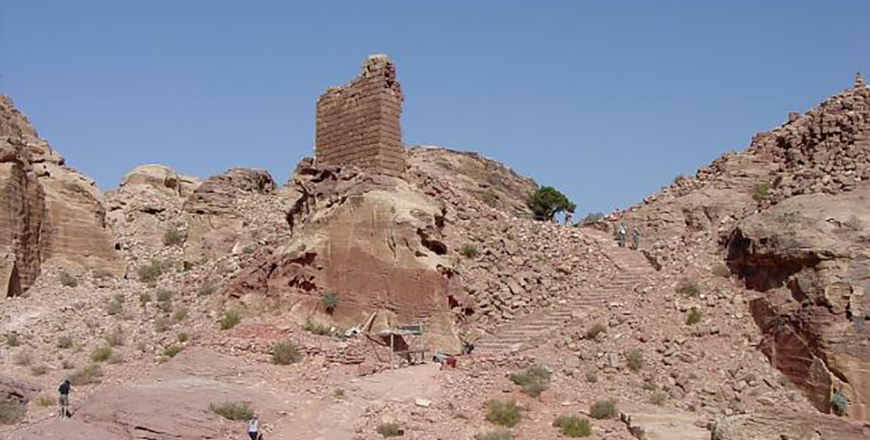AMMAN — During Baldwin I (1100-118), Crusaders built a fortress Al Wu’ayra inside Petra and the stronghold was part of the same network of castles and fortifications as Montreal (Shobak) and Karak. The settlement had the role of controlling pilgrimage and trade routes in southern Transjordan and its position, inserted into a cliff enabled defenders to hold the post as long as necessary.
Furthermore, the monastic settlement in Al Wu’ ayra had been older than Crusades and goes back to Byzantine period and Christianisation of Petra and its hinterland.
New research documents different hermitic structures around Petra and north of Al Wu’ayra on the hilltop of Jabel Urf ad-Dik, a single hermitic complex had been discovered.
“It consists of a cell dug into a sandstone outcrop, deliberately located near two ancient rock-cut cisterns collecting water from a net of channels. The hermetic cell has an irregular plan with two benches and nowadays is reused by local shepherds to shelter their flocks,” said Andrea Vanni-Desideri, who for years has been a part of Italian archaeological mission in Jordan. The mission has been very active in Karak, Shobak and Petra.
On the back wall in front of the entrance, a barely readable cross appears among some badly preserved graffiti and the monk’s cell is also provided with a grave dug into the sandstone bedrock nearly in front of the entrance, Vanni-Desideri outlined.
A famous Swiss scholar and traveller, who rediscovered Petra, Johann Ludwig Burckhardt (1784-1817) studied epigraphs in caves in Petra that were used by hermitic community.
“In fact, Albert of Aachen and Foucher de Chartres report the presence of Greek monks around ed-Deir whose epigones were still living there until 1884. The Hermitage is certainly the most interesting complex in this area the central part of the scattered hermitic settlement seems to be the one taking advantage of a Nabataean quarry where three artificial cavities, partially integrated by masonry, are the only remains of a more sophisticated complex,” Vanni-Desideri underlined.
Also a short tunnel gives access to the central cavity, most probably the chapel of the complex, provided with a seat, an altar niche decorated with red crosses and Christological monograms in Greek, Vanni-Desideri elaborated, adding that the survey and the study of the whole complex is still in progress together with the tracing and study of the epigraphic context.
Before emergence of Christianity and Islam, hilltops were used for Nabataean funerary structures, and these structures were turned into hermitic cells.
“A lot of red painted crosses mark the entrance of these recesses and a large panel was engraved with crosses suggesting the presence of a monastery,” Vanni-Desideri said, noting that the Christian reutilisation of the complex is indicated by some modifications of the water catching system as well as by destruction of some idols and superimposition of crosses.
Due to a very arid climate, Nabataeans developed a system of water catching and a large cross is engraved above the system of water collecting basins.
“It is possible that these basins were intended as water supplies for two different hermitic installations,” Vanni-Desideri explained, adding that the ongoing research is intended to throw light on a particular aspect of Christian Petra, often inadequately examined by historians and archaeologists.
